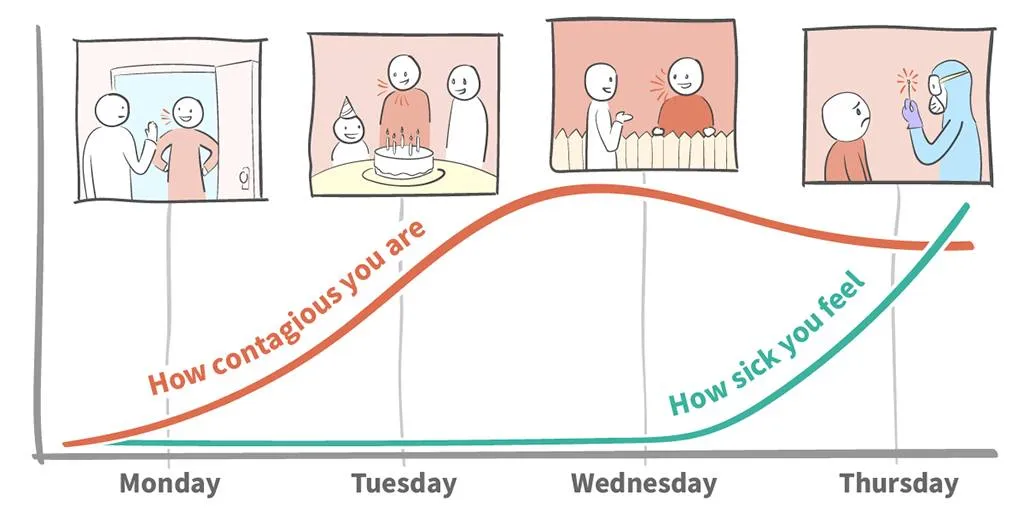
This diagram can explain a lot. It's roughly accurate for an infection acquired on Friday.
On Friday and maybe Saturday, you'll probably still get a negative PCR test. They're sensitive, but viral RNA needs to reach the places the samples are taken.
By Sunday, you'll probably test positive on a PCR, but still negative on a fast antigen test. Your levels just aren't high enough for the less sensitive test.
By Monday, you're probably a bit contagious (if you're on track for symptom development), and still might get a negative on an antigen test. Or maybe both positive and negative on mulitple tests, as with Elon Musk's experience.
On Tuesday and Wednesday you're highly contagious, and both PCR and antigen tests will reliably give a positive result.
By Thursday, you're starting to feel symptoms, will still test positive, but your viral load may actually be on the decline.
Over the following week, your viral load will likely decline even if your symptoms are worsening. This will make you less contagious, and antigen tests may fail to register a positive, despite your remaining symptoms.
PCR tests may continue to return a positive result for another couple of weeks due to traces of viral RNA in your system. Antigen tests are less sensitive, and mainly flag a positive when you're at your most contagious.
A positive from an antigen test means it's nearly 100% certain you're positive. A negative from an antigen test just means you're not highly infected at that point in time.